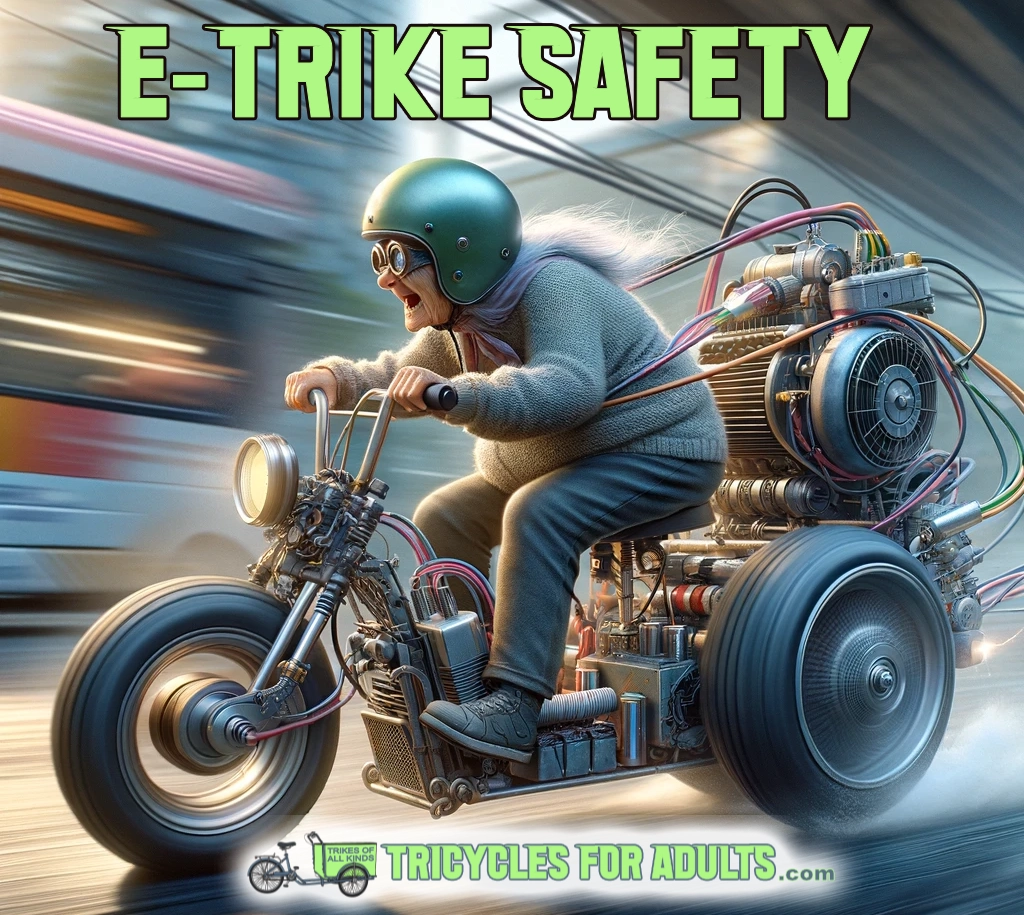E-Trike Safety Essentials
The e-trike, or electric tricycle, has surged in popularity as a sustainable and efficient mode of transportation. Offering a green alternative to traditional motor vehicles, the e-trike appeals to eco-conscious commuters, delivery services, and tourists alike. As their presence on our roads increases, so does the importance of ensuring they are used safely, especially because of their vulnerability relative to automobiles and trucks. Let’s dig into e-trike safety: the dangers electric tricycle riders face as well as present to others, and safety measures and practrices we can employ to mitigate the risks for everyone.
Why E-Trike Safety Is So Important

E-trikes present unique safety challenges, largely due to their design and operational characteristics. Unlike conventional bicycles, e-trikes have a motor, increasing their speed and altering their handling dynamics. This can pose risks not only to the riders but also to pedestrians and other vehicles. Furthermore, the variation in e-trike designs means that their stability and safety features can significantly differ. Statistics reveal a concerning trend of accidents involving e-trikes, many of which could have been prevented with better safety measures and awareness. Addressing these safety challenges is crucial to prevent injuries and ensure that e-trikes contribute positively to our urban transport ecosystems.
Key Safety Features of E-Trikes
For e-trikes to be considered safe, they must be equipped with several key features. Proper lighting is essential for visibility, especially during dawn, dusk, and night riding. Efficient brakes that can handle the increased weight and speed of e-trikes are also vital. Additionally, the structural integrity of e-trikes must be rigorously tested to withstand regular use and protect riders in case of a crash. These safety features, among others, play a pivotal role in preventing accidents and enhancing the rider’s control over the vehicle.
Safe E-Trike Riding Practices
While e-trikes come with innovative features designed to improve safety, the behavior of the rider is equally important. Wearing helmets, following traffic laws, and performing regular maintenance checks are fundamental practices that significantly reduce the risk of accidents. Riders should also be aware of their surroundings, practice defensive driving, and avoid risky maneuvers. Educating e-trike users on these practices is essential in fostering a culture of safety.
The Role of Government In Ensuring E-Trike Safety
While manufacturers bear some responsibility in ensuring the safety of the e-trikes they build, electric tricycle riders will bear many of the preventable safety risks without safety regulations and standards enforced by governments. These regulations must be applied and enforced on several levels: in manufacturer’s factories; in street building; and in driver and cyclist behavior. To ensure that electric tricyclists, as well as cyclists and pedestrians are safest, the various governmental regulatory bodies must make safety a priority over speed and freedom. This can only be accomplished by enforcing manufacturing standards that comply with device and road safety standards, by building road infrastructure that controls speeds and allows space for cyclists, and by creating and enforcing safety laws on both drivers and cyclists. Additionally, special laws must accomodate for the increased speeds of e-trikes. Collaboration between manufacturers, government agencies, and safety organizations is vital in creating a safe operating environment for e-trikes.
E-trike safety is a complex issue that requires the attention and effort of all stakeholders, including riders, manufacturers, and government bodies. By prioritizing safety through the design of e-trikes, adopting safe riding practices, and implementing effective regulations, we can ensure that e-trikes remain a valuable and safe addition to our transportation networks. Let’s all do our part in making our roads safer for everyone.
e trike, electric trike, electric trike safety, trike safety